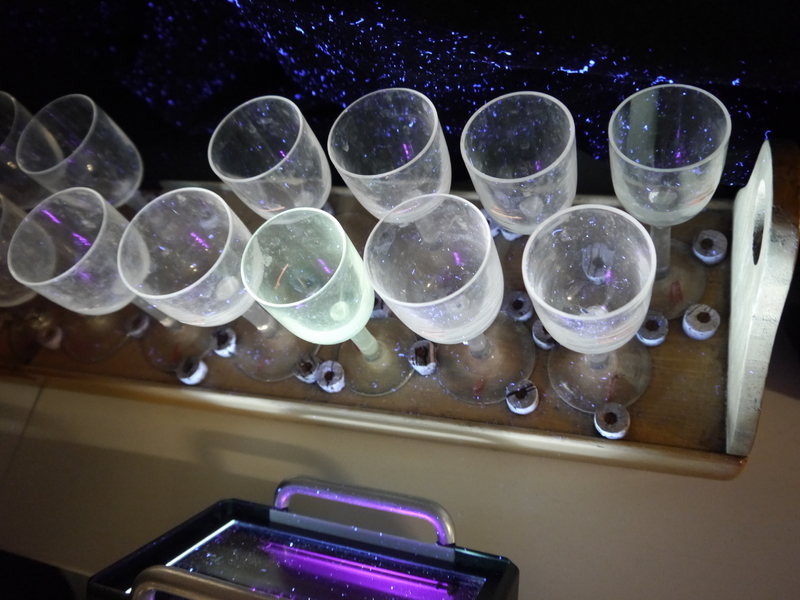UV light fluorescence
For the examination under UV light, the object was placed on a black cloth, all lights were blocked and a photograph was taken. Lead in the glass can produce a bluish white fluorescence, manganese a yellow one and antimony gives a light pink or pink-orange fluorescence. Lead can partly replace silica as a network former and renders the hot glass mass softer at a lower temperature. It can add to the stability of a glass. Manganese dioxide (MnO2) is added to the molten glass to act as a decolorizer against colorants / impurities such as iron (greenish blue) and thereby producing a colorless glass. The iron is oxidized and thereby changes to a slightly yellowish shade, while the manganese is reduced to MnO (colorless). Under the exposure to UV-light for several years, a manganese containing glass can turn pinkish – a process called solarization. (Koob 2006, p. 36)
Citation: Charlotte Holzer, ‘Findings from Non-destructive Material Analysis on Musical Glass Instruments’, in: Materiality of Musical Instruments. A Virtual Exhibition.

